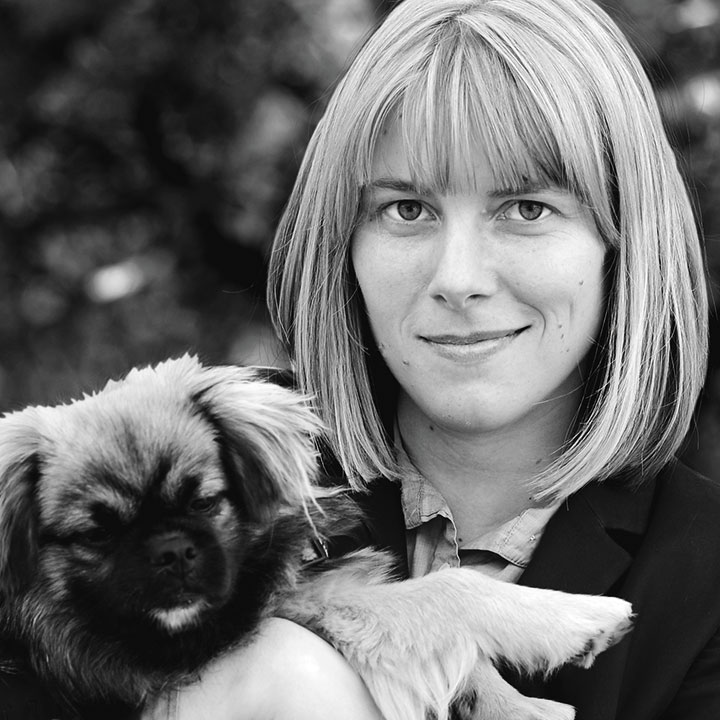In my junior year, 2006, Princeton University published the last paper “facebook.” The booklets had been a feature of dormitory life for decades: mass-printed, cheaply bound portrait galleries that students could use to learn more easily the names and faces of their classmates. The introduction of Facebook, the social-networking platform, to college life took place during my years as an undergraduate, and my classmates were among the first students to sign up for it. But few if any of us could have guessed the scale of change it represented.
Facebook came to Princeton in 2004. At the time, it was still “thefacebook.com.” Harvard students had created the site to render college life virtual and therefore (if only in the imagination) controllable, and the site’s functionality reflected the social consciousness of college students. Members blocked together their profiles like stylized portraits in stained-glass windows, filling in the panes of personality by answering questions about academics, dating, student groups, and favorite books and movies. They also posted public lists of their friends, those friendships duly certified via email confirmation. Only people with an email address from selected schools could join the site. I joined on Wednesday, Sept. 28, 2005, at 11:26 p.m.
What most strikes me about this period is our unfamiliarity with the rules of this new game. Princeton is a place of tradition. For most of the activities a student might want to undertake — bicker a club, audition for an a cappella group, schmooze with a professor — we knew exactly what to do and how to do it (and could picture Hobey Baker doing it). But we had no precedent for some of the activities social media required. For example, how was a student whose face had never been made public to portray himself in his profile picture? Today, we know that the point of social media is brand management; personal branding is everywhere a familiar art. At the time, we were as frightened of the public gaze as those early writers in print who, doubtful of whether the reading public was friend or foe, hid their works behind shrill, defensive prefaces. Many of us hid behind pictures of our pets. Others chose images from their studies; one of my classmates adopted a portrait of Machiavelli simply because he joined Facebook while he was writing a paper about The Prince. One of my professors — who would check the Facebook profiles of students who had applied for his class — used to mourn that “the interesting students never have their own pictures.”
More troubling still were problems of etiquette: When was it appropriate to add someone to your friends list? (At the time, students waited until the acquaintance was sure, emphasizing to researchers that they personally knew all of their Facebook friends.) Were you supposed to do something when a friend posted a comment on your profile page? What if he “tagged” you on his profile page? (The consensus, years later, is that it’s polite to click “like” under comments and to comment under tags.) What were we supposed to do with the ability to see who our friends had as friends? Jane Austen was the great chronicler of social life as theory of mind: I know that you know that I know. The new tools would perplex Pemberley with network theory: I know who you know who knows who I know.
On Facebook, just knowing someone entailed new actions, all of them anxiety-producing: Members could refuse or delete friends from their lists, or simply leave friend requests in limbo. If you were dating, you had to decide whether and when to change the category reporting your dating status — and wonder how this disclosure might affect your relationship. And the site invented new tortures for the hell of the breakup. A classmate interviewed one student who had tried to add an ex to his friend list. The ex left the friend request in permanent limbo, an insult that he found he couldn’t mention when they met in person: “I can’t say anything ’cause if I do, obviously, then she wins.” The pending friend request lurked on his homepage, like an infernal memento out of the works of Edgar Allan Poe: “I mean, it really does eat at your soul.” He and his friends would sit and plot intricate strategies to make her decide.
As if in response to this uncertainty, the Facebook groups that we created were aggressively Princetonian. The picture of student life that a list of early groups would provide is as crowded with stereotype as any campus novel. Lacking a sense of how we should act online, we role-played as the Princeton of F. Scott Fitzgerald 1917. One of the most popular groups was a safe pantomime of class conflict: “I Went to a Public School ... B----.” (In response to this group, students created “I Went to a Private School ... B----” and “I Went to a Quaker School ... Friend.”) Other groups piled on the Princetoniana: “Wawa Loyalists,” “Alexander Hamilton Had It Coming,” “Princeton Students for Procrastination,” “Princeton Students Against Quintiles,” “Jesus Loves All Quintiles,” “Princeton University: Where Your Best Hasn’t Been Good Enough Since 1746.”
This belief that the virtual world is a world apart defined the first bloom of the digital revolution.
In 2005, Lisa Kemp ’06, an anthropology major, wrote a junior paper on the culture of “thefacebook” at Princeton. What she found was that students constantly talked about the site, without prompting, in the language of authenticity. Despite our insistence that we only “friended” our actual friends, we insisted just as passionately that Facebook had little or no relation to real life. (We survive on such contradictions: The community that I have joined is totally fake, but I myself am authentic.) Some students refrained from joining the site altogether out of doubts over the authenticity of Facebook friendships. Others joined the site for the same reason, maintaining that friends on Facebook are not real friends, but collectibles. (“It’s definitely about status, but if you have too many people on your friends list, it just looks dorky,” a Princeton freshman told The New York Times. “If you have 230 friends, you’re taking it way too seriously.”) Still others believed that the site, being public, would make relationships “official.” These perspectives, although they vary in small ways, all tend to share a bright line of distinction between the online and offline worlds.
This belief that the virtual world is a world apart defined the first bloom of the digital revolution. Today, as the media scholar William Mitchell suggests, the sense of separation between the virtual and physical realms is gone. The Internet of Things associates the networking environment with the built environment. Actions in online spaces affect our lives offline, and we manage our lives offline in online spaces. Less than the specifics of our technology, our confidence in the reality of the “real world,” and its distinction from the digital world, sets these years apart as a different period.
The historian David Nye has described the history, in the United States, of the “technological sublime.” As an aesthetic category, the sublime is the sense of awe that arises in response to something so vast that it breaks the old frames of our understanding. Nye’s account takes in such wonders as the factory, the railway locomotive, the skyscraper, and the eruption of Mount Saint Helens; he ends in the 1990s, just before the rise of the World Wide Web. The breaking of frames that the online context has fostered is too delicate, the devices too miniature, to rate as sublime; yet the concomitant shifts in our culture are much faster and farther-reaching. Technological change — at least on the level of better images, faster processors, more acrobatic robots — can seem easy enough to predict, experience, and articulate; cultural change is difficult.
In my senior year, in one of the last columns I wrote for PAW, I described a scene from move-in day: “New packs of freshmen trod campus paths, punching each other’s names into their cell phones, bobbing shoals of blue light.” I wrote the line because I had never before seen such a thing. I wanted readers to notice the same contrast between the traditional rhythms of campus life and the alien procedures that new technologies made possible. And I wanted, I suppose, to register a quiet sense of awe in the presence of a new technology. I did not then guess that the new social-networking site, which seemed like a throwback to the old Princeton, would exert a greater force for change than the phones. The spread of prosumers (those who produce and consume media at the same time), the datafication of the public sphere, the gamification of textual culture — these fed on the triumph of social-media platforms. Nor could I guess what other routines soon would end and begin. But life on campus, precisely because it forces us so directly to take in the new against the old, gives us moments to stand on the shore of the world and think.
 Elyse Graham ’07, a former PAW student columnist, is an assistant professor of digital humanities at Stony Brook University.
Elyse Graham ’07, a former PAW student columnist, is an assistant professor of digital humanities at Stony Brook University.


